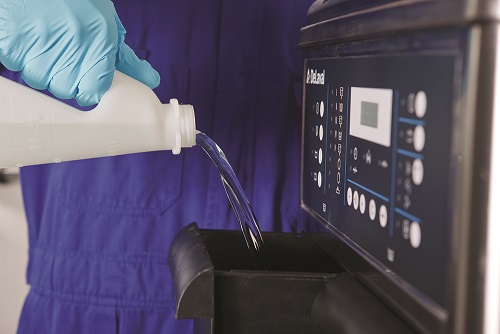WHAT IS THE ROLE OF THE DIFFERENT DETERGENTS IN THE SUCCESS OF CLEANING?
The formulation of a cleaning product relies on the functional properties and possible combinations of well-known chemicals. To effectively prevent deposits the following properties are considered:
Alkali: An alkaline detergent will convert fat into a soluble compound that is suspended and can then be rinsed out with the cleaning solution (saponification), so it doesn’t stick to equipment surfaces.
Surfactants: The main function of surfactants is to detach deposits from surfaces and suspend them in solution.
Acids: Dissolves minerals and can remove general milk deposits in combination with surfactants.
Chlorine: Breaks proteins into smaller parts and has disinfecting properties. Liquid chlorine is unstable, depending on formulation and storage conditions. Therefore, avoid long storage, high temperatures and exposure to UV light to maintain product efficacy.
Water softeners: As minerals reduce the cleaning efficacy, water softeners are used to counteract this and to avoid minerals settling in the installation.
